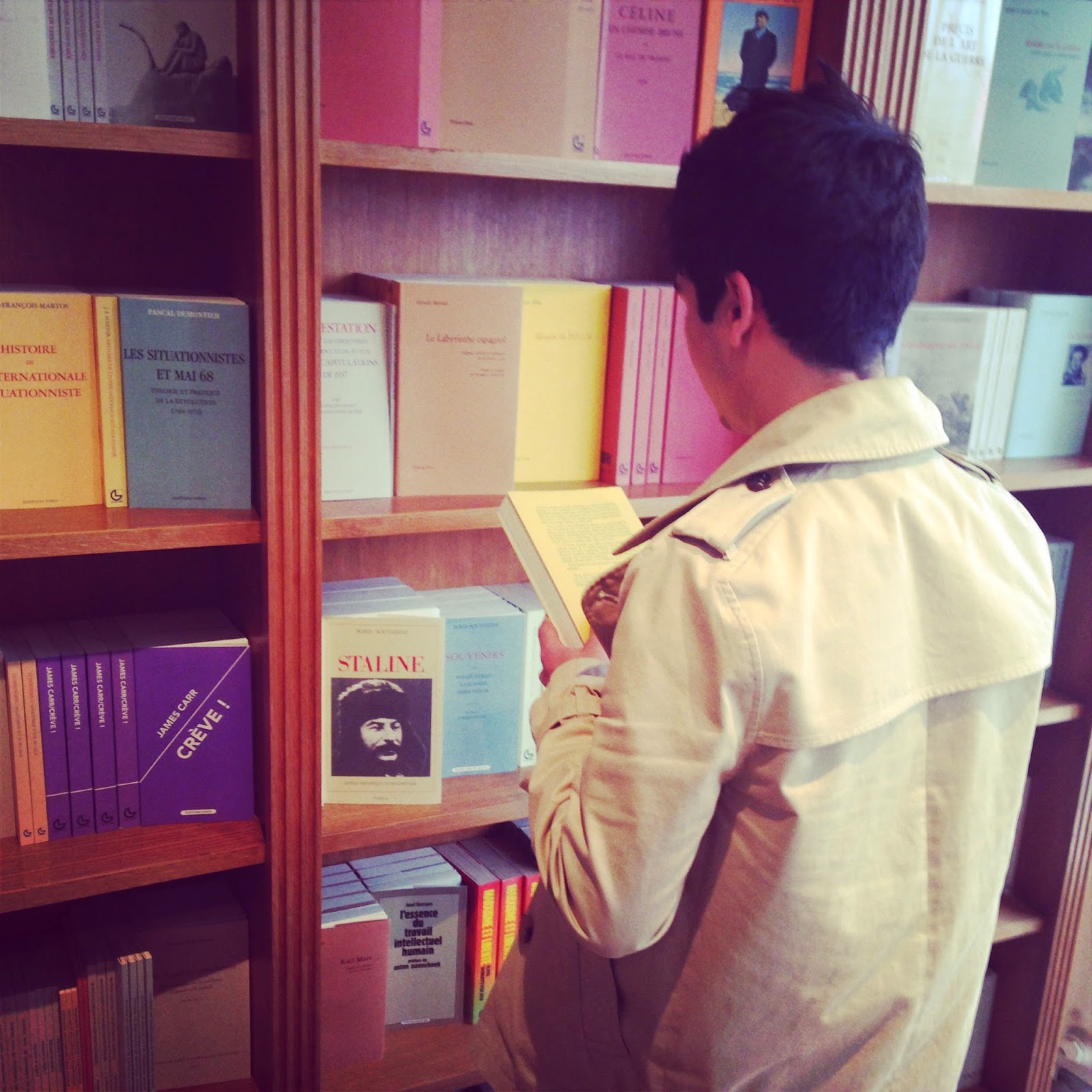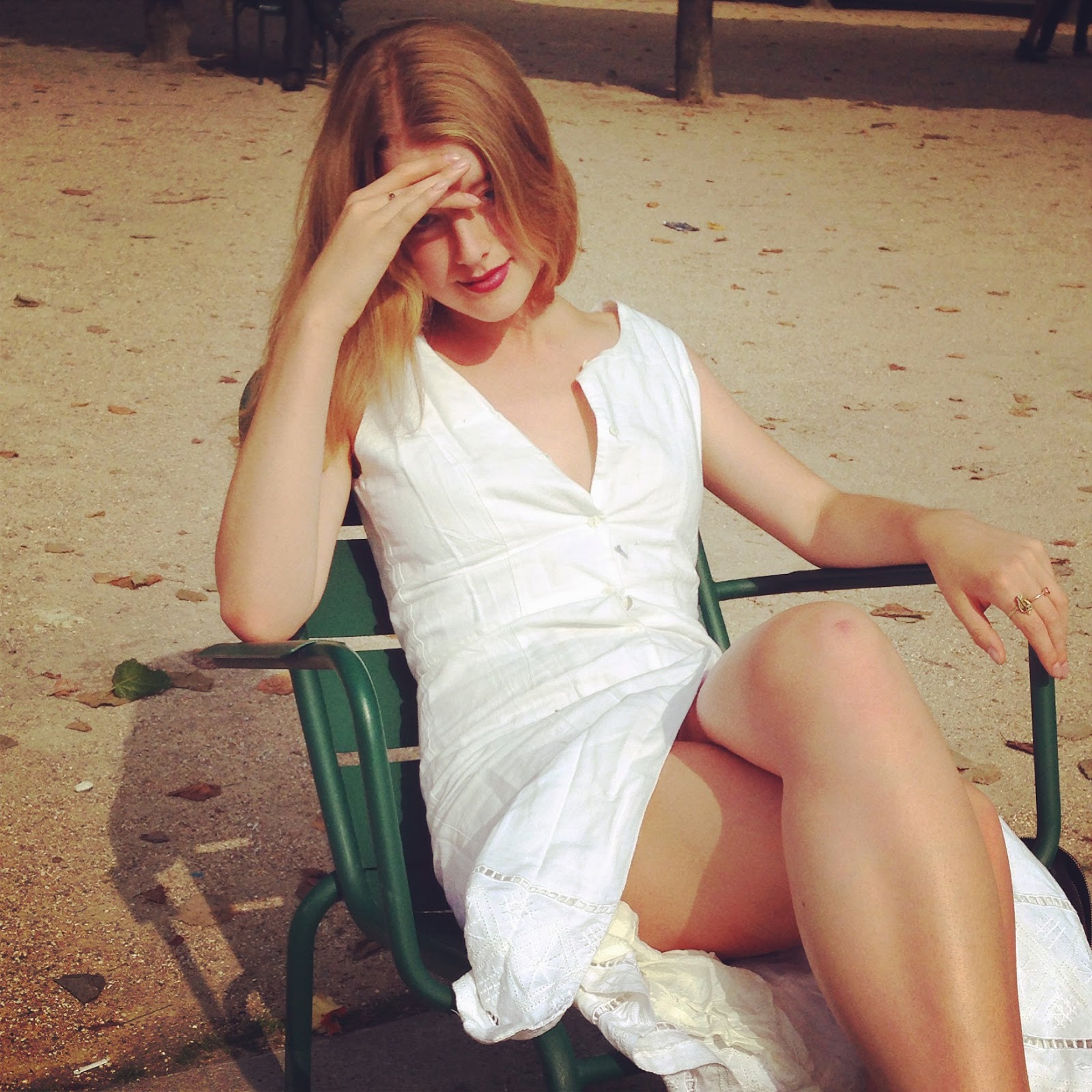Dennis Hopper: The Lost Album
The Royal Academy, London
26th June - 19th October
"Like all artists I want to cheat death a little and contribute something to the next generation" Dennis Hopper
During my 48hour
pause in London between Paris and New York I had just enough time to stop by
Dennis Hopper’s retrospective in the Burlington Gardens wing of the Royal Academy. Although, I must begin by admitting
that in this rare instance it was not my own initiative, but that of a knowledgable friend, which lured me in. Surprisingly, it was rather refreshing for me to enter an exhibition without any prior experience of the artist's work, surrendering myself to the guidance of a true fan of Dennis Hopper's films.
All I knew about Hopper was that he was another beautiful face of 1960s Hollywood alongside boys like James Dean, who we still lust after today. But, much like my experience of Robert
Mapplethorpe’s retrospective in Paris, I’ve come away feeling somewhat entwined
in Hopper’s life and loves with a wish to further explore. As with Mapplethorpe's bohemian dream in the elusive Chelsea Hotel, New York, Hopper was simultaneously documenting his experiences as a frequenter of Andy Warhol's Factory - giving us a window into that period of extraordinary creative development. Given that both retrospectives were exhibiting the works of recently departed artists, one can't help, but ponder the question; why it is that an artist's work truly does seem all the more poignant and impactful once they are dead?
Illustrating a real cross section of 1960s American culture, the exhibition shows all sides of the story from the decade's social progress to the suffering of many during the time of the Civil Rights movement. You immediately feel a close connection with the works when you realise that Hopper had hand-selected these images for his 1970 exhibition and these are the exact vintage prints, which featured in it.
It is incredibly powerful watching him successfully blend the spheres of art, fashion, photography and politics across this display of 400 photographs. Some of his photographs are incredibly sensual, some simply capture a moment of utter liberation, but they are all equally captivating. The majority of works are intense, intimate portraits, but the expansive scenes of East and West
Coast America in the clip of Easy Rider and the shots Mexico are equally breath-taking.
Given my naivety, I was grateful that the Royal
Academy provided us with informative posters at the
entrance to the exhibition, which were pivotal in understanding the context of
Hooper’s work. However, it was increasingly frustrating as we wandered around that there
were no blurbs, so we were clueless as to the setting or subjects of many of the images. Between us we were able to recognize a few of the well-known faces like
Marcel Duchamp or Peter Blake, but I wish we could have known where the
photographs were taken, especially the scenes of euphoria in hippie communes or what may have just been a festival.
Evidently the notoriety of his
subjects like James Dean and Paul Newman were intrinsic to the building of his profile as a photographer. As he explored texture in the iconic image of Paul Newman below, he was solidifying his position as a true artist. Hopper was well known for his roles in films like Blue Velvet, True Romance and Apocalypse Now, but he also held the deadly, but dreamy combination of being a
successful filmmaker, photographer and artist.
A real polymath; his 1969
film Easy Rider - projected in the exhibition - cemented his role as a director
when it won coveted awards at Cannes film festival and was later nominated for an Academy
Award. The journalist Ann Hornaday described it as
"a portrait of counterculture
heroes raising their middle fingers to the uptight middle-class hypocrisies. Easy
Rider became the cinematic symbol of the 1960s, a celluloid anthem to
freedom, macho bravado and anti-establishment rebellion."
In terms of curation, the presentation of the photographs was refreshingly simplistic. I really like how rather than being framed in the sort of obnoxious Ikea frames you see in so many contemporary art galleries, they were humbly presented.They were
black and white photographs of a modest size, which were displayed
thematically, although perhaps too close together. Nevertheless, it was exciting being
liberated from any particular chronological order and subsequently suffering the dismay of plodding along at the pace of the crowd. Instead, we
were able to dive between whatever works took our fancy; be it Mexican tombstones or
hippies frolicking in the wild. I fell madly in love with many of the beautiful bohemians he shot on his travels, one of which is this gentleman at the bar below.
Hopper was famous
for his eye for composition, given that he never cropped or altered his images.
This gives his work an untainted beauty, a sort of raw purity, which is hard to achieve in the 21st
century world of contrived Instagram posts and various other sources of visual
bombardment. As seen above, he has an eye for contrasting patterns and fabrics, which bring a vibrancy, an energy to his work. I loved how images of the glitterati of 1960s America, artists like Andy
Warhol and Martial Raysse were juxtaposed with shots of Martin Luther King’s
campaign and even the Hell’s Angels bikers in their natural habitat. Furthermore, the exhibition serves as a window into the glamour and underlying suffering
of Americans in the 1960s. The sincerity of portraits of his contemporaries like Roy Lichtenstein are rather moving, because you can truly see the depth of Hopper's friendships with his subjects shining through. There is an intimacy that you cannot fabricate.
At moments it feels like you’re living a Jack
Kerouac novel, with endless images of the young and beautiful, the starving, but free. Then you are exposed to these incredibly sincere shots of human suffering; the energy of fighters in the Spanish bull ring or the tension of political campaigns and you are assured of the poignancy of his work. I would highly recommend dedicating an afternoon to this exhibition before the end of the summer. You leave well versed in the highs and lows of 1960s America and the bittersweet fame of his contemporaries. Dennis Hopper truly puts to shame all of the 21st century 'polymaths' with his photography and film as you fall prey to the allure of the untainted beauty in his work, its quivering honesty.


































































